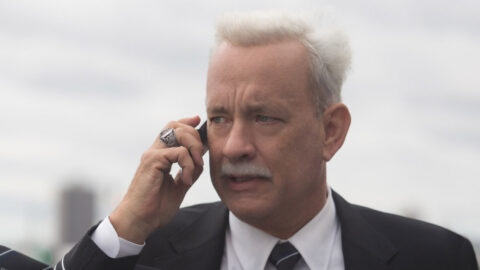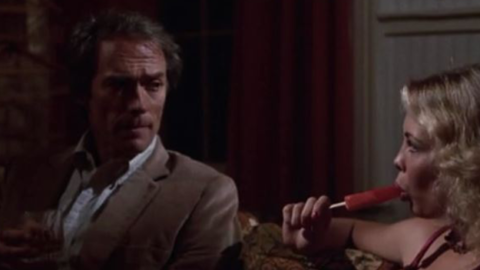Deep Focus: The 15:17 to Paris
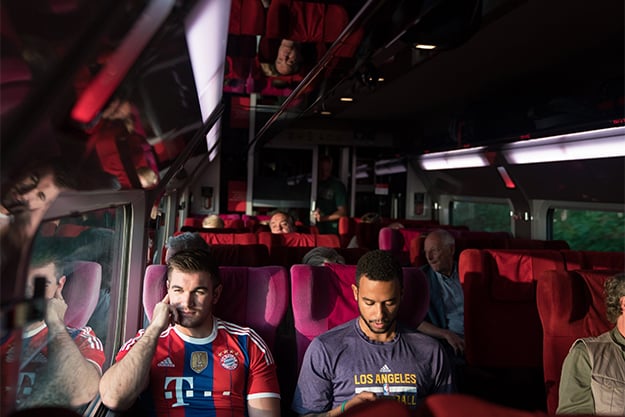
Clint Eastwood’s The 15:17 to Paris takes a taut, engrossing, and surprising nonfiction book—the most complete and genuine account of an act of real-life heroism that enthralled the whole free world—and turns it into a flaccid, bewildering docudrama. The 15:17 to Paris: The True Story of a Terrorist, a Train, and Three American Heroes, written by those heroes, Anthony Sadler, Alek Skarlatos, and Spencer Stone, with freelance journalist and author Jeffrey E. Stern, was published in 2016, just a year after their anti-terrorist triumph, so it was easy to mistake it for an “as told to” quickie. But it’s actually a lucid and revelatory adventure with a complicated structure that takes in each man’s personality and point of view as well as the terrorist’s.
Eastwood’s aggressively incoherent movie follows the book so ineptly that it turns Stone into the central figure and treats the others as supporting characters. First-time screenwriter and adapter Dorothy Blyskal, Eastwood’s “staff assistant” on Sully, doesn’t address the radicalization of the bad guy, Ayoub El Khazzani, and she fails to portray the three protagonists as equal parts of a cohesive team. (The book gives the men separate sections that include three individual perspectives on El Khazzani’s attack.)
The film stars Stone, Sadler, and Skarlatos as themselves, but they stumble through it looking awkward and confused. When they prevent El Khazzani (Ray Corasani) from massacring the title train’s passengers on August 21, 2015, Eastwood depicts life-or-death action without imagination or lucidity, using the kind of close-in, handheld camerawork that we used to see in hyper-caffeinated coffee commercials. All the pains Stern and company took to atomize the confrontation on the page, making each part intelligible and suspenseful, go for naught in a bloody smear of slashing, bashing, and jujitsu. Eastwood doesn’t even attempt to convey how each man’s vision focuses and narrows as “a tidal wave of adrenaline” smashes in through “a gate in his brain.”
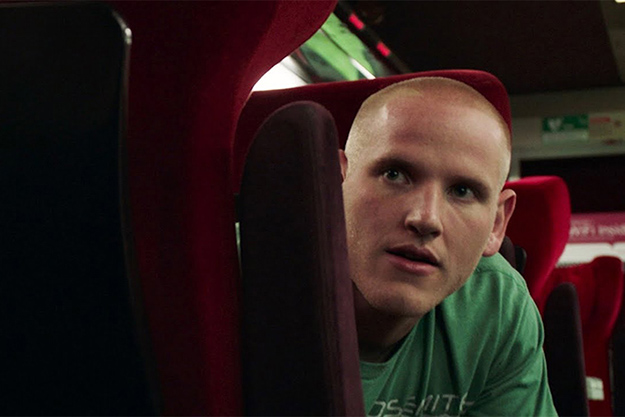
As usual, Eastwood can barely land one dramatic punch at a time, so he mostly ignores the critical role of a British businessman named Chris Norman, who helped the Americans hogtie the would-be assassin. In the movie’s emotional coda, when France’s President François Hollande makes Norman and the three Yanks Knights of the Legion of Honor, audiences will wonder, “Who’s the fourth man?” And when Hollande refers to heroes from three countries—England, the United States, and France—some probably won’t know that he’s referring partly to U.S.-born Frenchman Mark Magoolian, who seized an AK-47 from the gunman but got shot in the neck. (Another Frenchman helped subdue El Khazzani, too, but he wished to stay anonymous.) Hollande echoes Sadler’s widely quoted statement, “in times of crisis like that, the lesson would be to do something,” but that’s too clear and modest a message for an Eastwood movie.
The film offers an opaque précis of the Americans’ childhood friendship in Sacramento (you might hope Saoirse Ronan or Greta Gerwig will show up) before devolving into crayon sketches of their young adult lives and disintegrating into a travelogue of their reunion trip a decade later through Western Europe. The dialogue in that section consists mostly of, “This is amazing!” Alek joins the other two only on their last stop, Amsterdam, which is where, about an hour into the movie, they act out a PG-13 version of The Hangover Part IV, then board the 15:17 to Paris to become the ultimate Good Samaritans—or maybe just reflexive Christian warriors. Twice Stone recites The Prayer of St. Francis: “Lord, make me an instrument of your peace. Where there is hatred, let me bring love. Where there is offense, let me bring pardon.” Does Eastwood want to push this spiritual message or is he just trolling for some higher meaning? We can’t tell from a film as feebly thought out as this one.
Eastwood’s critical champions have often mistaken his lack of a distinctive, nuanced voice for “objectivity.” But without scripts by talented writers like Philip Kaufman (The Outlaw Josey Wales) and David Webb Peoples (Unforgiven) or stories that are brutally or sentimentally melodramatic—or both, as in Million Dollar Baby—his weakness as well as his primitivism stand cruelly exposed. This film moves along haphazardly and half-heartedly, rarely following through on any of its structural or narrative devices. The brief flash-forwards to Ayoub boarding the train in Brussels and initiating his attack merely goose the action rather than illuminate his motives or mindset. Anthony Sadler delivers a voiceover introducing himself and his two friends; it pops up, then disappears for the duration of the film.
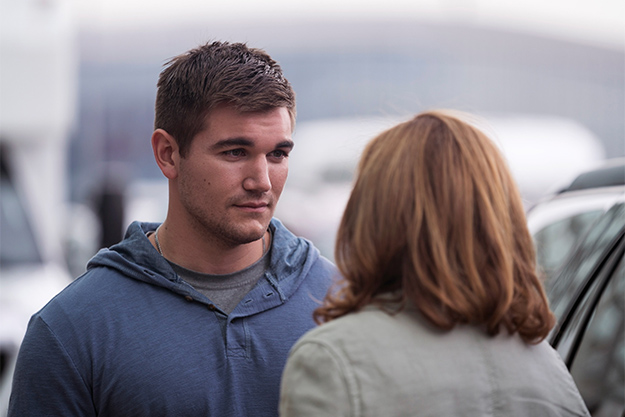
The movie’s characters deliver everything from its exposition to its themes in thudding declarative dialogue. In the book, after a teacher (Irene White) tells Spencer’s mother Joyce (Judy Greer) that “boys with single moms” are “more likely to develop problems,” she thinks to herself, “My God is bigger than the world’s statistics.” In the movie Joyce simply shouts out that thought as a parting shot to the teacher.
One of the film’s taglines reads, “In the face of fear ordinary people can do the extraordinary.” But the movie itself portrays Spencer and Alek as misfits in search of their common destiny; they’re unhappy first in public school, then in the small Christian school where Joyce and Alek’s mom Heidi (Jenna Fischer) enroll them out of desperation. That’s where Anthony comes into the picture as an African-American charmer who is better at navigating a strict, lily-white parochial school than his two new Caucasian pals. The film doesn’t cover Anthony’s family life, ambitions, or career plans the way it does Spencer’s and Alek’s. As grownups those two remain as besotted with the military—or at least, the military of their war-film fantasies—as they were when they battled with toy guns. At the time of the near-catastrophe on the train, Anthony was a student at Sacramento State College, while Spencer was an airman first-class in the U.S. Air Force and Alek had finished a deployment in Afghanistan with the Oregon Army National Guard.
The whole picture has the air of a reality-TV stunt rather than reality. When Spencer sets out to lose dozens of pounds and get in shape to try out for an elite corps, USAF Pararescue, we could be watching an episode of The Biggest Loser. (After the train attack, Alek became a finalist on Dancing With the Stars.) Only occasionally do we get a glimpse of the instinctive rapport Eastwood hoped to capture in these men, and it’s usually at minor moments, like when they grumble at a waitress who wants to serve them beer while they’re pitifully hungover. Generally, the professional actors struggle in vain to establish a performing rhythm or emotional connection to these heroes—and wind up coming off as fellow amateurs.
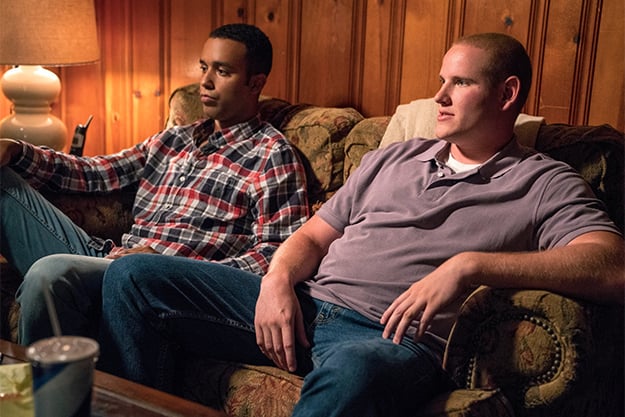
Whether because of slapdash screenwriting or panicky editing, the film’s continuity gets messier as it goes along. Among many logic-defying leaps and inexplicable references to off-screen action, one moment Spencer is at an air base in Texas, the next he’s Facetiming with Alek from the Azores. Eastwood truncates many of the juiciest real-life incidents, like the woeful bout of sniper training in Afghanistan that precedes the upsetting yet somehow comical theft of Alek’s rucksack. The guts of the sequence must be buried somewhere in the film editor’s trash bin.
More important, the filmmakers’ sloppy compressions alter the story’s meaning and authenticity. In the book, when Spencer fails at one elite-service base after another, then moves to a more workaday camp, complete with curfews, he considers it “daycare for adults.” During a near-fatal shooting incident at the army medical center, a retired army sergeant major pulls out a .45 caliber handgun and fires repeatedly at his estranged wife. Spencer and the rest of the recruits studying nursing in a nearby classroom must follow orders to “shelter in place,” barricading the entrance and hiding under desks rather than laying plans to jump the shooter if he walks in through the door. The idea, in air force language, is “to mitigate the room vulnerabilities.” Spencer, though, refuses to follow protocol. He leaps to the side of the doorway to get the drop on a potential assassin. It’s an intriguing and ambiguous scene, depicting Spencer’s difficulties with authority and counter-intuitive advice as well as his essential bravery and leadership. But the way Eastwood shoots and stages this sequence, all it does is elevate Spencer’s stature and condescend to the other characters, including the instructor who mocks him as an “asshole.” The movie has already characterized the goal of the entire base, during every task and every day, as “mitigating vulnerabilities.” Spencer may be right to scoff at military conformity, but the film goes too far when it suggests that most non-elite servicemen are cripplingly passive and devoid of thought. (In one of the many odd little disconnects between the film and the written record, an officer caps the sequence by calling the emergency a false alarm, meaning that the near-murder took place too far away to affect them.)
Eastwood constantly fails to keep his eye on the prize. He does illustrate Spencer mastering jujitsu. But he doesn’t establish that Spencer must learn to control his opponent’s neck with his arms and legs with his feet. So Eastwood fumbles what could have been a thrilling moment during the attack when Spencer can’t quite level Ayoub with a chokehold. It diminishes not merely Spencer’s personal drama, but his comrades’, too. It was Alek who warned Spencer, “You don’t have it, you don’t have the choke in, you don’t have it,” after Alek tried beating Ayoub unconscious with his own machine gun barrel. We’re left wondering what Anthony contributes besides moral support and the occasional helping hand or punch. In reality, the selfie-addicted Anthony, filming the aftermath on his smart phone, provided the fullest record of the crime scene. (In the book’s acknowledgments, Alek thanks Anthony “for stepping up when it counted most.”)
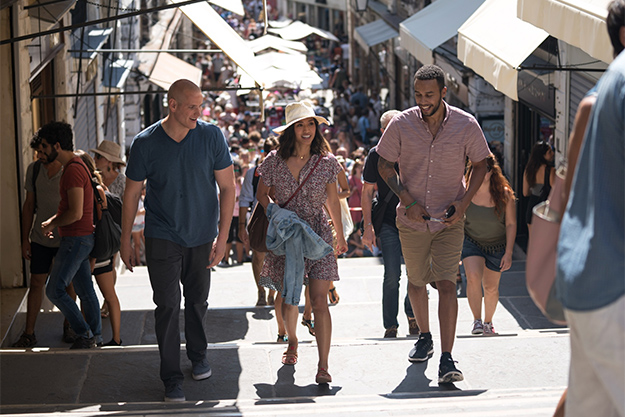
After the violence ends, Spencer recites The Prayer of St. Francis in his head as he waits for his ambulance. (He was treated for cuts, a nearly severed thumb, and an injury to his right eye.) Everything in this 95-minute film is anti-climactic, including, sadly, the climax. The 15:17 to Paris is the only fact-inspired film I’ve seen where most of the audience didn’t stay to see the documentary footage of the heroes at the end. (In this case, the three friends are being celebrated at a Sacramento homecoming.) That’s how badly the casting of the actual heroes has backfired.
Eastwood may want us to absorb lines like “Where there is hatred, let me bring love,” but the action says, “Where there is hatred, let me bring muscle.”
Michael Sragow is a contributing editor to Film Comment and writes its Deep Focus column. He is a member of the National Society of Film Critics and the Los Angeles Film Critics Association, and a programmer at the Criterion Collection.



